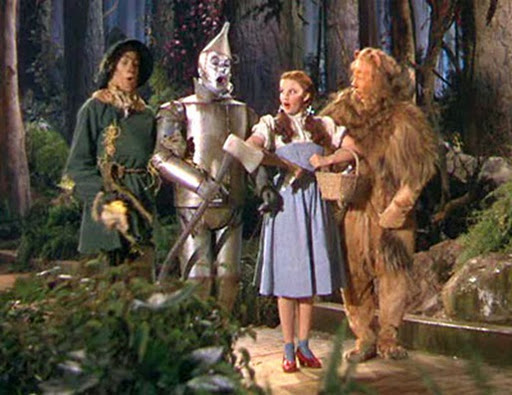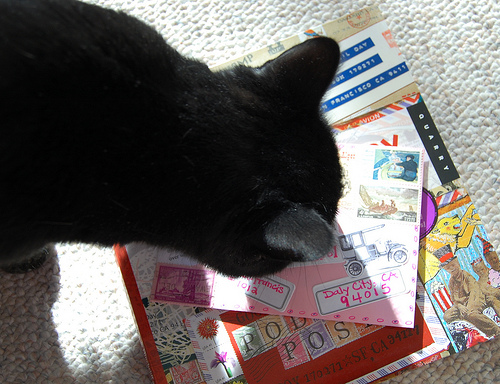Layers and Layers of Plot, Oh My!
Novelists focus heavily on plot, and rightly they should. Your novel needs a well-crafted and believable plot. A good story will have one. A great story will have many plot layers. You could call them subplots, but I find it helps to think of them as layers because of the way they work in your story.
Plot layers come in all thicknesses of importance, and if they are designed carefully, they will make your story a rich one with unique and lasting flavors that will linger long after your reader finishes your book.
One way that may help you in developing and deepening your plot layers is to think about your own life. You have some big goals—long-term, long-range goals, or maybe even just one—on the horizon at the moment. Maybe it’s to finish college and get that degree. Maybe it’s to start a family and create your dream life with your spouse. In a novel, that might be your main plot, which features the visible goal your protagonist is trying to reach. This is the overarching plot that all the other plot layers will sit under. But just as with a multilayer cake, when you take that bite, the different flavors of the layers should complement each other and create a delightful overall taste.
Life as Layers
As that “plot” plays out in your life, other things encroach or dovetail that goal. You may be dealing with some personal issue—like a recurring health problem or a former boyfriend who keeps showing up against your wishes. You may also be dealing with trivial things like trying to decide what color to paint your bedroom, and the paint store guy, who’s completely incompetent, can’t get the color right.
Life is made up of layers. I picture them by their size and scope. You have the big, fat layer of the main plot on top, then different layers underneath of different thicknesses and flavors. All this creates a very rich cake. If life were just one sole “plot” (“I gotta get that college degree”), it would be boring and so would you. And so are novels that only have one plot layer. Life is complex. It’s messy. We’re told to complicate our characters’ lives. Well, this is the best way to do it—by introducing many layers of plot, and not just for your protagonist but for your secondary characters as well.
Vary the Intensity of Each Layer
If you can create three layers at least, think of them as plots A, B, and C. You know your A plot—it’s the main one driving your story. But now you need B and C. You want B to be an important layer that will help the main plot along—either something that enhances Plot A or runs headlong into conflict with it. Plot C will be thinner and more trivial, and may even add that comic relief in your tension (picture your character trying to get the paint guy with myopia to see the obvious difference between the two unmatching paint swatches). Believe it or not, Plot C can serve the purpose of revealing a lot of emotion and character (ever thrown a hissy fit at a store when you’re having a bad day over something else?).
Take this a step further and imagine one of your secondary, supportive characters in your novel dealing with an issue that juxtaposes with your protagonist’s issues. What if Ann, your hero, is fighting infertility, and at her peak of despair at being unable to conceive, her best friend Joan not only learns she’s accidentally gotten pregnant—she’s going in for an abortion. Can you see how this plot layer can add depth to your story by providing a place to reveal more of your protagonist’s needs, fears, and personality?
In a mystery I wrote that needed a big revision, I decided to make a secondary character my protagonist. Fran is a bit sketchy in the original story; you know a little about her life, personality, and tastes. She’s a homicide detective investigating the hit-and-run that frames my story. But now I needed to bring her to the forefront. Not only did I deepen her involvement with the main plot and increase the number of her scenes, I added an ongoing, growing tension with her teenage son that exposed issues of trust and believability—elements that are key themes of my main plot. Fran doesn’t really believe in her perp’s claims of innocence, nor does she believe her son’s when he insists he didn’t hack the school’s computer.
In the midst of all this, she hates the LA heat, has terrible asthma, so my Plot C is the aggravating element of her air conditioner at home always going on the fritz—which compounds and exacerbates the tension and “heat” in her house and family life. Play with your themes; think of ways you can create these plot layers, and then find places in your novel, or create new scenes, where you can add these in. If you do, you will end up with a delicious, irresistible story readers will love to dig into.
This week, take a look at your plot and if you don’t have any B or C layers, think of one of each that will complement your main plot. find places in which to bring these out, or create some new scenes to play out the new plot layers. Share how this helped deepen the heart of your story.












Susanne, I like your comparison of our life-plot and its layers to a novel’s layers of plot. Plotting is difficult for me and I’m always grateful to learn a new idea that helps me understand. Thanks for the insight!
i’m still chuckling at the image of you handing back a compulsively highlighted and totally corrected menu. the wide eyes of the owner’s daughter.
VERY helpful advice! I was just thinking about a piece I’m working on at present, which has almost a paranormal theme running through it as one of it’s layers. The work is writing itself – almost running ahead of my ability to type!
Susanne, I enjoyed your comments on plots and I wholeheartedly agree that plots drive the reader through the story. In my first printed story, Revenge…No Statute of Limitations, I experienced what Susannah MacDonald is experiencing. The story was pulling and pushing me to the next character and plot. I thought that was unusual until I wrote the second story and went through the same process. It was fun and rewarding!!!
Thanks for the kind words! glad it helps. Layering plots is a lot of fun!
Excellent article. I like the concept of layers as opposed to plots. To me, plots always implied separate entities. Layers implies parts of a whole, but dependent upon and related to each other.
Susanne:
A beautifully written article that’s easy to understand and follow. I wish I had known about this way back when, but I think sometimes artists (especially writers) just need to hack through the overgrowth of confusion and get really frustrated before the answers sink in, and make sense. How great that you’re spelling it out for other writers.
Thought this was a great article. Have added a link to it at The Funnily Enough.
regards,
mood
Moody Writing
Very nice article, and so helpful. I’ve subscribed to your blog – lots of great information!
I read this over and over. Thank you for this information and it’s good to read all your articles, I see a huge passion in you for the love of writing.
How could you tell (lol)?
Comparing plot layers to certain goals in life is a very wise thing to say because it’s a concept that’s easily grasped. I don’t think anyone has just one layer to their life, there’s always other things going on.
I hesitate to write anything here because you may cover it later, but I think the idea of surprise is important.
Just like life surprises us… and frustrates us and gets in the way of our goals.
As you’re forming your plot lines or character arcs, allow the story to develop contrary to your own principles. When this happens in our lives, we identify it as sin, confess it and move on. Allow your characters to discover their mistakes as well.
Allow your plot to stump you. Even though you think, “How will the protagonist get out of this if I allow it?” You need to surprise your audience. If they know exactly how things will go, they’ll be bored with your product.
Surprise yourself… and your reader.